News From China
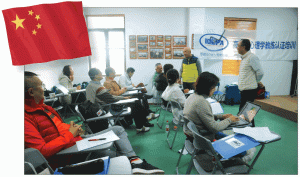 By Toby Tse, USGTF-China Representative
By Toby Tse, USGTF-China Representative
We Conducted the first USGTF International Golf Psychology Association certification and training course on March 19 and 20. Training started at 8:30 a.m. and finished at 6:30 p.m., 10 hours each day. It covered the five sections, including all the drills and tests. Each section took approximately 3 1/2 hours to complete, with 2 1/2 hours teaching, a half-hour working on drills, and a half-hour on test papers.
Ten candidates registered and nine attended, with one missing due to work. Eight candidates passed and got certified, with one who failed and is attending the next course, including the no-show candidate.
 The two-day course was quite heavy and tight in timing. The students were loaded with tons of materials and information. We taught with a PowerPoint presentation of some 200 slides covering bullet points, and a hard copy handout of the full content was given to each student, with some 60 pages printed on both sides. The course was conducted in the Chinese language.
The two-day course was quite heavy and tight in timing. The students were loaded with tons of materials and information. We taught with a PowerPoint presentation of some 200 slides covering bullet points, and a hard copy handout of the full content was given to each student, with some 60 pages printed on both sides. The course was conducted in the Chinese language.
It took us more than two years to prepare the course. The most time-consuming jobs were the Chinese translation and preparation of the PowerPoint slides, where we had to pick the key points which were bell-ringing and had to search the pictures and photos for all the names mentioned. Due to cultural differences and the late start of golf in China, most Chinese students had no idea of those who were featured, including U.S. presidents, ancient philosophers, sport psychologists, famous sport coaches, and the older generation of golfers, even though they were in the Hall of Fame and had substantial influence and achievements. We had to show them the photos, histories and achievements of these people so that they would accept them as credible sources.
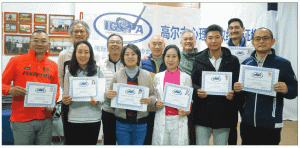 Conclusion – the course is well organized and prepared with valuable information and insight to prepare the attendees to be better players and coaches, and to re-engineer the way they think, play and teach.
Conclusion – the course is well organized and prepared with valuable information and insight to prepare the attendees to be better players and coaches, and to re-engineer the way they think, play and teach.
Due to cultural differences, we will be making some changes to the program, including mentioning some Chinese golfers. In any case, we won’t make drastic changes and will keep the original context and framework in its totality.
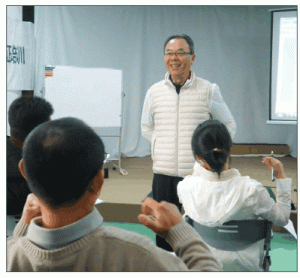
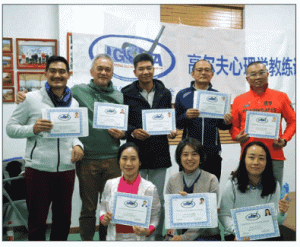


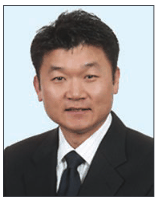 Brandon Lee, president of USGTF-Korea, hosted the USGTF-Korea National Awards 2018 dinner on December 16, 2018. He invited 50 people who have been the most dedicated to the development of the USGTF-Korea federation and the Korean golf industry for 2018. He also awarded the 2018 Achievement Award of USGTF-Korea to two winners, the Certificate of Recognition for Top 10 Teachers of USGTF-Korea for 2018 and the 2018 Best Teacher Award.
Brandon Lee, president of USGTF-Korea, hosted the USGTF-Korea National Awards 2018 dinner on December 16, 2018. He invited 50 people who have been the most dedicated to the development of the USGTF-Korea federation and the Korean golf industry for 2018. He also awarded the 2018 Achievement Award of USGTF-Korea to two winners, the Certificate of Recognition for Top 10 Teachers of USGTF-Korea for 2018 and the 2018 Best Teacher Award.

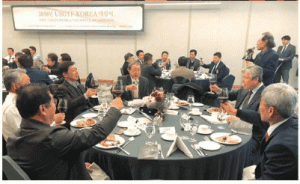
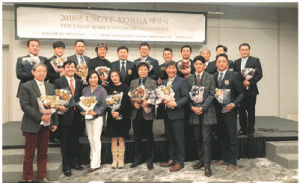
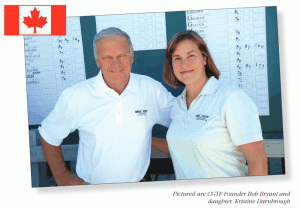 It has been 25 great years growing the game of golf in Canada! Times have changed and so have we. Reflecting back on how our federation grew and competed before the regular use of the internet and social media is astonishing. The administration team of Bob Bryant and Kristine Darnbrough, along with our pioneer members and wonderful facilitators, truly deserve a great “thank you” for their efforts, support and contributions!
It has been 25 great years growing the game of golf in Canada! Times have changed and so have we. Reflecting back on how our federation grew and competed before the regular use of the internet and social media is astonishing. The administration team of Bob Bryant and Kristine Darnbrough, along with our pioneer members and wonderful facilitators, truly deserve a great “thank you” for their efforts, support and contributions!
 Mark Harman made a statement that he is still a force to be reckoned with at GlenLakes Country Club in Weeki Wachee, Florida, this past May. The reigning World Cup champion from Ridgeland, South Carolina, set a Southeast Region Championship scoring record of seven under par to best Ron Cox of Henderson, Tennessee, by five shots. Richard Crowell from Pensacola, Florida, and Rich Lively of Rockledge, Florida, took third and fourth, grabbing the balance from the $1,200 purse. Thanks goes out to GlenLakes head pro Tom McCrary, who has hosted us for several years.
Mark Harman made a statement that he is still a force to be reckoned with at GlenLakes Country Club in Weeki Wachee, Florida, this past May. The reigning World Cup champion from Ridgeland, South Carolina, set a Southeast Region Championship scoring record of seven under par to best Ron Cox of Henderson, Tennessee, by five shots. Richard Crowell from Pensacola, Florida, and Rich Lively of Rockledge, Florida, took third and fourth, grabbing the balance from the $1,200 purse. Thanks goes out to GlenLakes head pro Tom McCrary, who has hosted us for several years.  USGTF member Walt Abraham, head golf coach of Athenian High School in Danville, California, led his squad to the BCL-East league round-robin regular season title and also the league post-season tournament title. The team finished 9-1 in match play and next heads to the Division 2 championship tournament. The league title marks the seventh time in Abraham’s 11 seasons as head coach that Athenian has taken that honor. Athenian fields a young squad of three freshmen, one sophomore and two juniors, with three players earning all-league honors.
USGTF member Walt Abraham, head golf coach of Athenian High School in Danville, California, led his squad to the BCL-East league round-robin regular season title and also the league post-season tournament title. The team finished 9-1 in match play and next heads to the Division 2 championship tournament. The league title marks the seventh time in Abraham’s 11 seasons as head coach that Athenian has taken that honor. Athenian fields a young squad of three freshmen, one sophomore and two juniors, with three players earning all-league honors.  Cole Golden shot an opening round 69 against a strong field that featured several current and past USGTF champions at a windy Ridgeview Ranch Golf Course, which hosted the USGTF Southwest Region Championship May 4-5 in Plano, Texas. Tough, tricky greens and somewhat wet conditions after several days of wet weather had hit Texas earlier in the week greeted the competitors. Southwest Region director Bruce Sims and Master Lee carded 76 the first day, while Brent Davies and Chris Tyner shot 77. Grant Gulych, Jeff Kennedy, and D.B. Merrill came in with 78.
Cole Golden shot an opening round 69 against a strong field that featured several current and past USGTF champions at a windy Ridgeview Ranch Golf Course, which hosted the USGTF Southwest Region Championship May 4-5 in Plano, Texas. Tough, tricky greens and somewhat wet conditions after several days of wet weather had hit Texas earlier in the week greeted the competitors. Southwest Region director Bruce Sims and Master Lee carded 76 the first day, while Brent Davies and Chris Tyner shot 77. Grant Gulych, Jeff Kennedy, and D.B. Merrill came in with 78.
 By Graham Lewis, USGTF Teaching Professional Townsend, Georgia
By Graham Lewis, USGTF Teaching Professional Townsend, Georgia

 What are the first memories that you have of golf? If you started the game as a kid, they probably have to do with a family member – usually a parent – who introduced the game to you. Many golfers look back on those days with great fondness and nostalgia.
There is no better family sport than golf. Four family members can all play in the same group, something that is difficult to do in other sports. You can indeed do the same thing in tennis if you’re playing doubles, but unless the skill level is relatively similar among the four, it can make for a difficult time. Since golf, of course, doesn’t have other players affecting your playing of the game, it doesn’t matter if there is a skill disparity, even a great one, among those in the same group.
Golf also has an amount of down time that others sports do not offer. In tennis, there is constant action. In bowling, there is always someone rolling the ball down the lane. But in golf, most of the time is spent walking or riding to the next shot, so there is ample time for conversation and bonding. Some of the best friendships golfers have were formed on the golf course. Indeed, it’s not uncommon for golfers to have mainly or only golfers as friends.
The game also tends to lend itself to easy conversation that may not be found in other venues. Those who are parents know how tough it is sometimes to have conversations with their children as they get older, especially teenagers. But for some reason, conversation while playing golf seems to come naturally for most participants.
It has been said countless times that golf is also a metaphor for life. A well-known adageis that if you want to truly get to know a person’s character, play 18 holes of golf with them. It is the rare person who changes the character and behavior they exhibit outside the course once they step onto the first tee.
Life lessons can also be imparted to our younger family members as they play the game. Perhaps a child is having a tough time that day on the course and they feel like quitting. Teaching them to persevere on the course is a good lesson that can carry them through life. Let’s face it – although we say golf is fun, it’s also difficult to excel at. If someone wants to play scratch golf or better, they have to put in countless hours over countless days over countless years, unless they are some sort of athletic freak. Golf can teach our children the valuable life values of determination and perseverance, and keeping a calm mind when things go awry.
Although the game can understandably lend itself to temper tantrums and worse, we must always remember that unless the game directly affects our well-being as a professional golfer, it’s only a game to the rest of us. How we do doesn’t affect our lives in any way, shape, or form, and it’s important to keep this perspective. These are the things that our younger family members, and sometimes even ourselves, should take to heart.
What are the first memories that you have of golf? If you started the game as a kid, they probably have to do with a family member – usually a parent – who introduced the game to you. Many golfers look back on those days with great fondness and nostalgia.
There is no better family sport than golf. Four family members can all play in the same group, something that is difficult to do in other sports. You can indeed do the same thing in tennis if you’re playing doubles, but unless the skill level is relatively similar among the four, it can make for a difficult time. Since golf, of course, doesn’t have other players affecting your playing of the game, it doesn’t matter if there is a skill disparity, even a great one, among those in the same group.
Golf also has an amount of down time that others sports do not offer. In tennis, there is constant action. In bowling, there is always someone rolling the ball down the lane. But in golf, most of the time is spent walking or riding to the next shot, so there is ample time for conversation and bonding. Some of the best friendships golfers have were formed on the golf course. Indeed, it’s not uncommon for golfers to have mainly or only golfers as friends.
The game also tends to lend itself to easy conversation that may not be found in other venues. Those who are parents know how tough it is sometimes to have conversations with their children as they get older, especially teenagers. But for some reason, conversation while playing golf seems to come naturally for most participants.
It has been said countless times that golf is also a metaphor for life. A well-known adageis that if you want to truly get to know a person’s character, play 18 holes of golf with them. It is the rare person who changes the character and behavior they exhibit outside the course once they step onto the first tee.
Life lessons can also be imparted to our younger family members as they play the game. Perhaps a child is having a tough time that day on the course and they feel like quitting. Teaching them to persevere on the course is a good lesson that can carry them through life. Let’s face it – although we say golf is fun, it’s also difficult to excel at. If someone wants to play scratch golf or better, they have to put in countless hours over countless days over countless years, unless they are some sort of athletic freak. Golf can teach our children the valuable life values of determination and perseverance, and keeping a calm mind when things go awry.
Although the game can understandably lend itself to temper tantrums and worse, we must always remember that unless the game directly affects our well-being as a professional golfer, it’s only a game to the rest of us. How we do doesn’t affect our lives in any way, shape, or form, and it’s important to keep this perspective. These are the things that our younger family members, and sometimes even ourselves, should take to heart.




 By David Vaught, USGTF Teaching Professional Bradenton, Florida
By David Vaught, USGTF Teaching Professional Bradenton, Florida